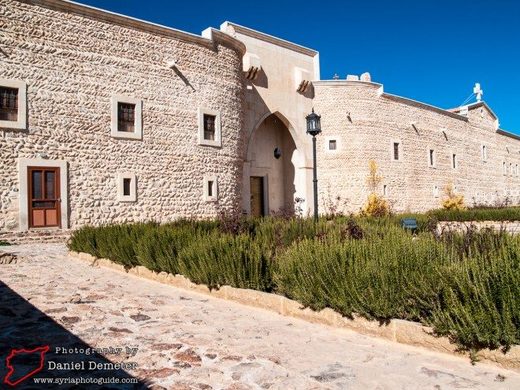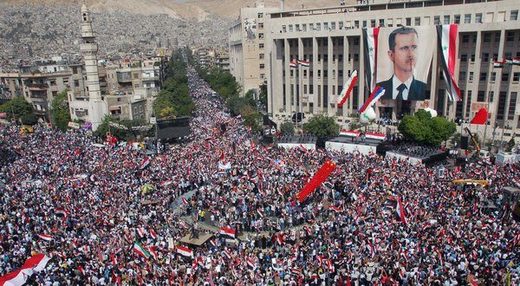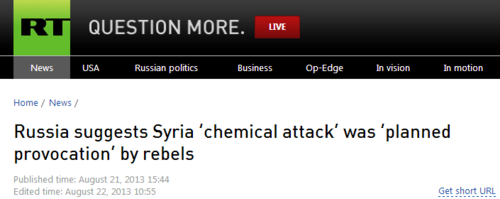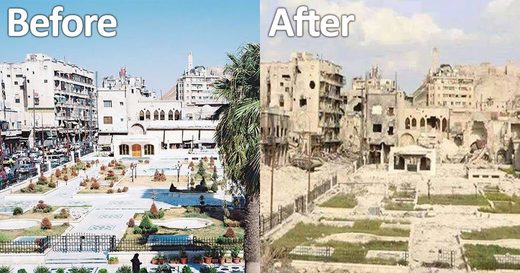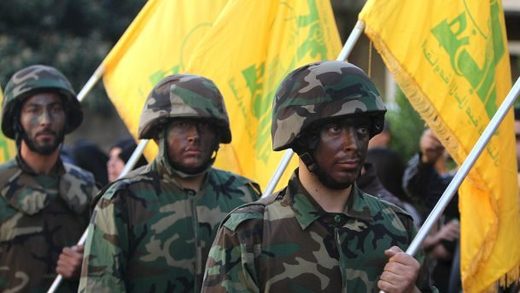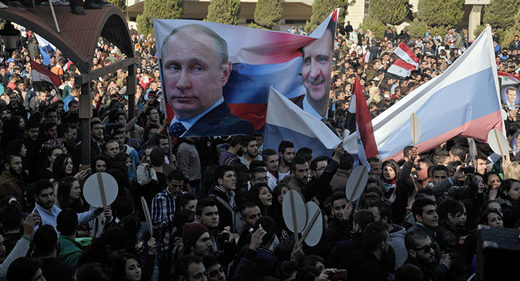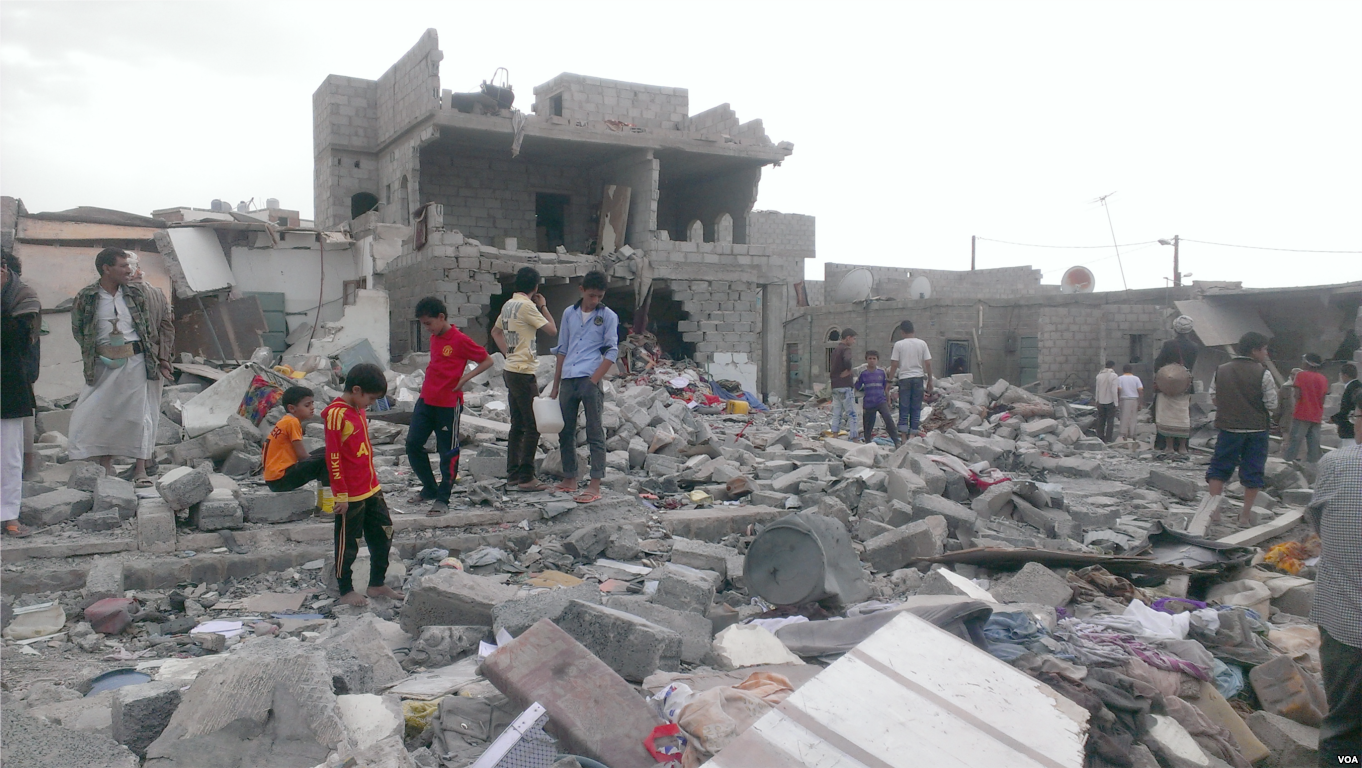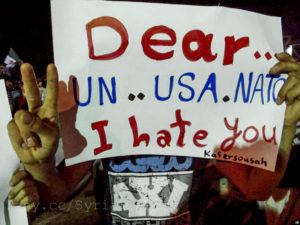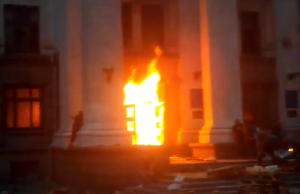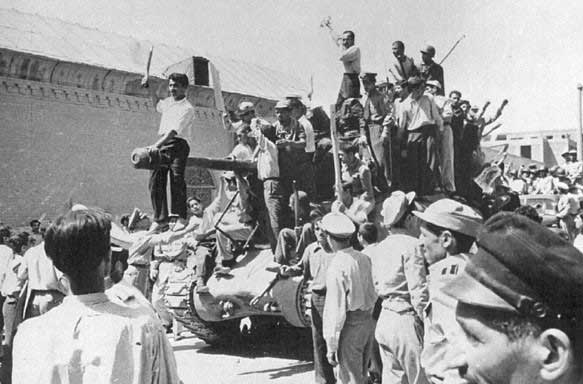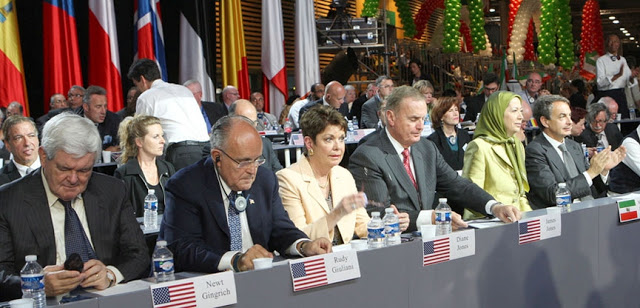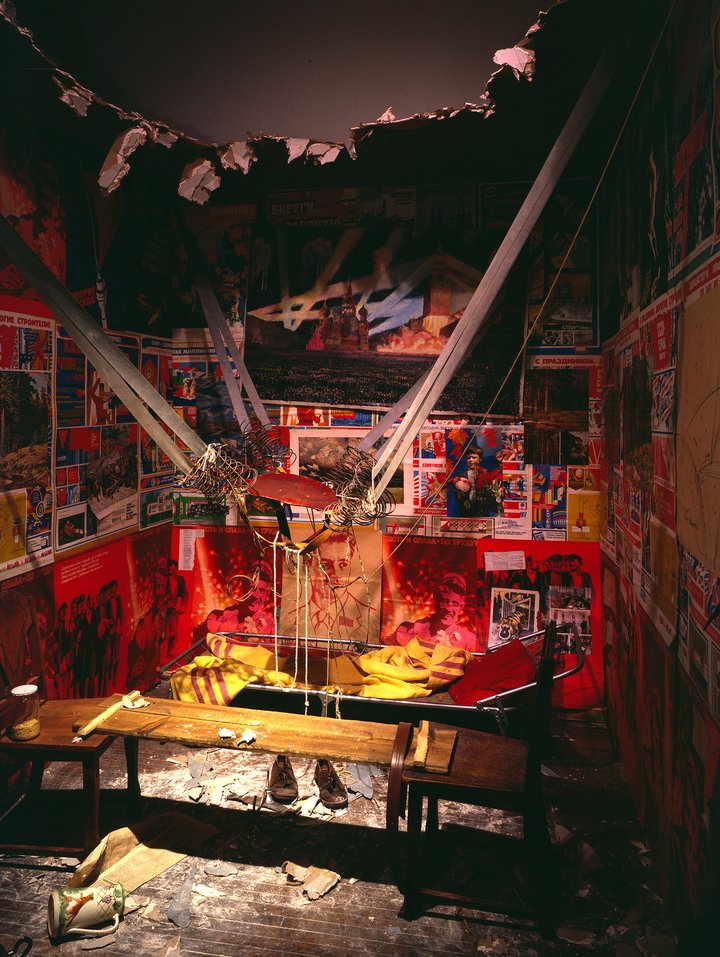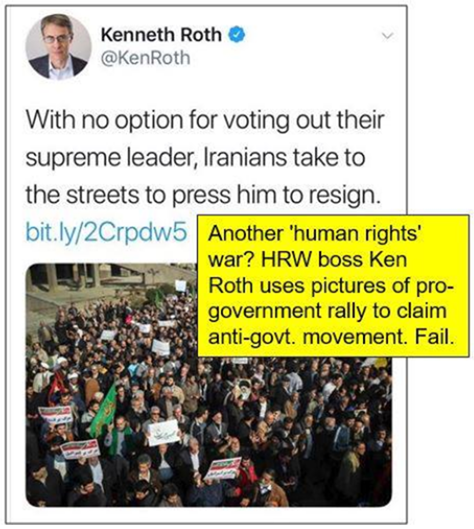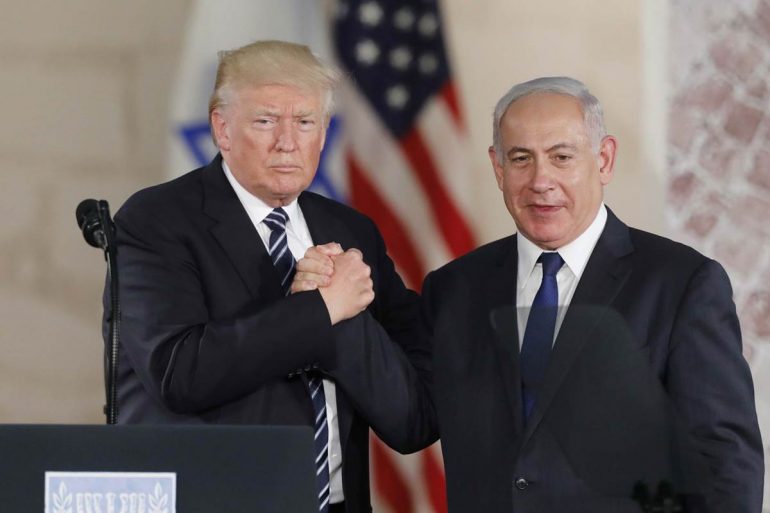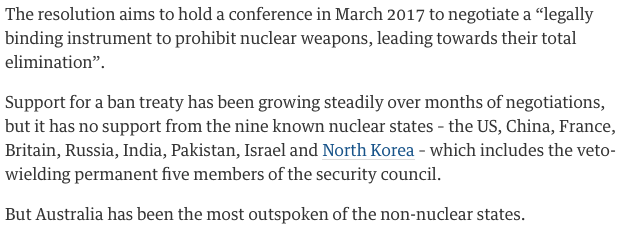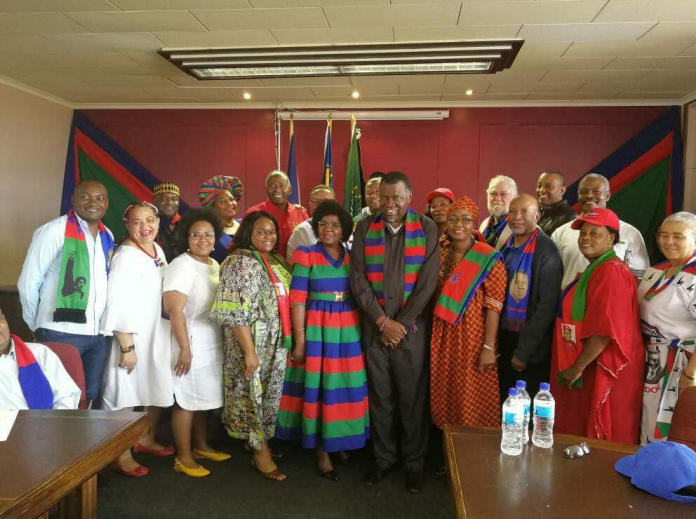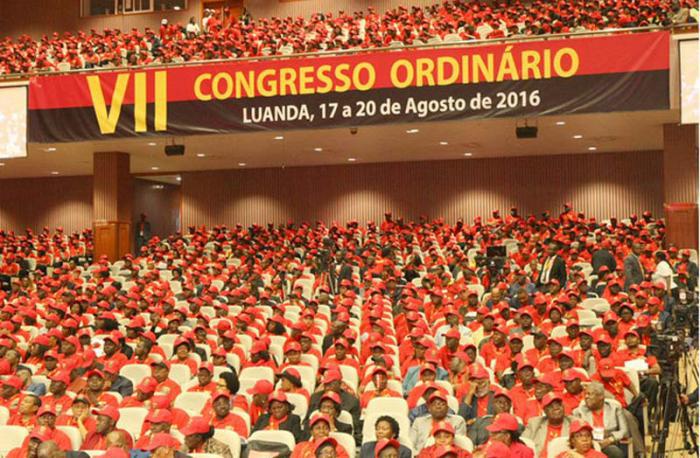The Prospect of Nuclear War with North Korea. It’s Not Just Trump
January 5th, 2018 by Tim Shorrock
The prospect of nuclear war with North Korea sits near the top of the list of unthinkably bad things about Donald Trump’s presidency. We all worry that a personal slight from Kim Jung Un could prompt Trump to do something horrific.
But the conflict with North Korea didn’t begin with Trump. It stretches back to World War II, and it includes all sort of US actions that are rarely discussed — from laying waste to North Korea during the Korean War to supporting military despotism in South Korea.
In the following interview — which first aired last month on Daniel Denvir’s Jacobin Radio podcast The Dig — veteran journalist Tim Shorrock details this often overlooked history and explains how it shapes the present standoff.
*
Daniel Denvir: Donald Trump’s presidency has intensified many bad realities — many of which were expected. But during the campaign, a heated-up conflict with North Korea was not a major topic of discussion. Why has 2017 become the year that we suddenly feel we are so uncomfortably close to the prospect of catastrophic nuclear war?
Tim Shorrock: The current situation is directly related to the year 2006, which is when, during the Bush administration, North Korea exploded its first atomic weapon after agreeing to shut down their nuclear program under the Clinton administration. The agreement broke down under the Bush administration. North Korea threw out the inspectors who had been there and started to build a plutonium bomb.
Bush did try to negotiate with the six-party talks [a series of meetings with six participating states — North Korea, South Korea, Japan, the United States, China, and Russia — aiming to find a negotiated solution with North Korea]. The situation kept escalating partly because conservative governments in South Korea had taken power in 2007 and 2008. The situation continued to intensify during the latter years of Bush.
Obama’s policy was to hope that North Korea would collapse. It was called strategic patience. There were no negotiations with North Korea at that time. It just kept escalating. So Trump did inherit a very tense situation, but President Trump made it far worse by doing these open threats; by saying he was going to change the policy, but also threatening them with annihilation, feeding into the North Korean justification for having nuclear weapons and advanced missile capabilities, which is that the United States was going to attack them at any time.
DD: What do you see as the main forces within the Trump administration pushing such a confrontational line in North Korea and to what extent should we see this as being more pushed by Trump himself?
TS: The key person in Trump’s policy is H.R. McMaster, who is the national security adviser. He has been pushing this idea of what he calls “preventive war” which would basically involve preemptive strikes by the US military.
During the summer, information began to emerge in the media of Pentagon battle plans. There was one report on NBC that said that the Pentagon had plans, if ordered to, to destroy two dozen missile sites and nuclear sites in North Korea led by B1B bombers stationed in Guam that would lead air attacks in these sites. They would be flying in international skies which means that they could do a unilateral strike in North Korea without South Korea being involved at all.
Talk of a war — maybe they would call it a limited war — but talk about war really began to accelerate in Washington. Any forum you would go to people would say that we are at a 50 percent chance of a war. From all these think tanks to people in Congress, the talk was about what it will take to destroy these sites; there is very little talk of negotiation or the roots of the crisis or anything.
I think Trump sees himself as MacArthur or something like that and he wants to show the world American might can destroy a terrible enemy. He thinks he can build himself up that way.
DD: A combination of MacArthur and Pershing?
TS: He loves Pershing and the counterinsurgency. This is the militant imperialism that he represents. They’ve rejected “strategic patience.” The press backs them up on this. They say that North Korea just breaks every agreement. But agreements have been held for quite some time — particularly the agreement that was signed during the Clinton administration.
DD: Can we talk about this idea that the North Korean regime is unlike other regimes that are operating within the interstate global system?
TS: There is certainly nothing irrational about a country that wants to defend itself from an outside power that has threatened to destroy them. They are even quite predictable actually.
At the beginning of this year, Kim Jong Un said he wanted to complete his nuclear weapon development in a New Year’s address. That means nuclear development, completing their missile program, and building missiles. These would be ICBMs that can launch weapons to the United States or any other foreign target. They said they were going to do that and they proceeded to test and work on that program.
For a state trying to defend itself from an outside power, there is nothing irrational about that. They saw what happened. I mean the pretense of WMDs in Iraq is what led the Bush administration to invade and occupy Iraq. So, he sees nuclear weapons capable of being fired by an ICBM as his protection or deterrent from that attack from outside by the United States.
DD: The lesson for any rational actor, as twisted and dangerous as this is for the whole world, is that not having weapons of mass destruction means that the United States and its allies might try to overthrow your government.
TS: The Libya example is very pertinent. A couple of weeks ago, the highest level defector from North Korean government since 1979, Thae Yong Ho, the deputy ambassador to London for North Korea, gave a speech here at the Center for Strategic International Studies in which he talked about the impact of the US NATO intervention in Libya on Kim Jong Un.
He said, here was a country that agreed to stop building nuclear weapons that was essentially disarmed in that way, and then a few years later was overthrown by a coalition and US bombing campaign. Later, several groups in Libya overthrew him and he was murdered by these groups. Giving up nuclear weapons is not a very good idea in that context.
They also see, there’s this line under Kim Jong Un that has developed. It is the Byungjin line. This is the overriding philosophy behind what they are doing militarily. Nuclear development, nuclear weapons, missile technology, and long-range and short-range missiles development go together with the development of the economy. These high-tech missiles help the economy grow as well.
DD: In the most hawkish corners of US foreign policy establishment at present, preventive war is being touted as a solution to the North Korea nuclear weapons program. What you’ve laid out is a very clear track record of US preventative unilateral offensive war actually becoming a major driver of nuclear proliferation, so quite the opposite of what it purports to be a solution to.
TS: Yes, besides the fact that the United States has had nuclear weapons aimed at North Korea for sixty years.
North Korea began thinking about building its own nuclear weapons capability in the 1980s when the United States still had thousands of tactile nuclear weapons in South Korea. Those weapons were withdrawn in a unilateral move by President George H. W. Bush as part of a move to withdraw such weapons from countries around the world. But the United States has a vast armada of Navy ships that are based in Japan that carry nuclear weapons, and it also has B-52s that can carry them.
So the weapons have always been pointed there at North Korea, so they have felt under threat because of that. One of the drivers behind North Korean policy is these massive US–South Korean military exercises that take place twice a year. They run through training exercises of invading North Korea in what they call “decapitation strikes” to take out the North Korean leadership, including Kim Jong Un.
DD: Dress rehearsals for invasion. Not remotely provocative.
TS: They say this over and over in their statements: that is a key concern. The other day there was a statement put out by the North Korean government which said — of course, the first line was captured in the press, which is “they will not negotiate on nuclear weapons” — the second part is “until the United States and South Korea stop these provocative military exercises.” I think that’s where the grounds for some kind of negotiation and solution lie.
DD: I want to ask you now about South Korean politics because I think they are so often rendered invisible in the United States amid the conflict with North Korea. I think it’s important to highlight the historical context here before we get into Moon Jae-in and the present in South Korea. Can you sketch out the important contours of that history and how that led to the current moment?
TS: Well, in the 1950s right before and after the Korean War, South Korea was ruled by Syngman Rhee, an autocrat who was much hated for his repressive policies and was even despised by the United States because he talked about conquering North Korea and unifying Korea under his rule. After the Korean War, the United States did not want to have any part of that.
That’s when I was a kid and when Rhee was still president. Something I’ll always remember is that when I was in Korea in 1960, people were on the streets for days and people were shot by the police, but he was overthrown. There was this big push to get him out from all ages, from all classes really. This was at a time, 1960, when Korea’s fortune was not clear. A lot of people in the North and South wanted unification. They had been divided. There had been this terrible war. People wanted reconciliation and unification. There was talk of a united Korea being neutral between the Soviet Union and United States during the Cold War.
In that period from 1960 to 1961, there was a relatively liberal-left government in South Korea. There was a lot of turmoil politically. Actually, young students were going to the border and meeting with North Koreans. There was a big change afoot in South Korea and with its relationship with the United States.
This all ended in 1961, when this general, Park Chung-hee, took over in a military coup. He had been trained by the Japanese Imperial Army. He had actually served in Manchuria during World War II fighting Korean Communists who were fighting the Japanese.
DD: Who were led by Kim Il Sung?
TS: They were led by Kim Il Sung and others. So there is this dichotomy that defines Korean history right there. The Syngman Rhee government and the United States saw any move toward unification as a communist move.
Cold War thinking really descended on South Korea in the late forties, therefore any movement to unify the country was stifled by the South, and violently so. There were a lot of uprisings in South Korea in the 1940s that were brutally suppressed by the Korean military with the support of the United States. The United States and the South ruled through a military government, and the Soviet Union occupied the North.
The agreement by the United States and Soviet Union basically concluded that Korea by itself was incapable of ruling itself. It was incapable of self-rule or taking itself out of colonialism. So they thought they could occupy it for a while and then oversee the unification depending on what Koreans wanted.
But the Cold War thinking deepened division and of course led in the 1950s to all-out war. When North Korea decided it was time to liberate South Korea, Rhee came into South Korea to cut off North Korean forces and push them north. President Truman made a critical decision to keep it going. They called it rollback at the time. They invaded North Korea to try to make one Korea under Syngman Rhee, but that’s when the Chinese military came in with millions of soldiers to push the United States back with a tremendous loss.
DD: People forget that United States and Chinese forces actually traded fire with one another on the battlefield.
TS: Many people do. The Chinese haven’t forgotten that. Mao Zedong’s son lost his life in Korea. It’s also important for the US Marines. Generals like James Mattis, though he wasn’t there, certainly remembers this. It was a tremendous loss for the Marines. The US Marines led the push into North Korea. There were several divisions that went way up to the North. The idea was to get to the Yalu River in China. That is when the Chinese army surrounded them.
They had to withdraw in terrible conditions. Thousands died and froze to death. It was an unbelievable situation for the Marines. When they were negotiating a truce, during the last two years of the Korean War, the United States completely controlled the skies and just obliterated North Korea, there was nothing left.
DD: It was one of the most brutal bombing campaigns in world history.
TS: One of the worst because there was nothing left. I grew up in Japan during the 1950s, I can still remember seeing destruction from the bombing of Tokyo. The firebombing of Tokyo in April 1945 obliterated large parts of the city, just burned it down to cinders with napalm.
In North Korea, every single city and every single village was burnt down to the ground.
Of course, North Koreans never forgot that, and they don’t let their people forget it. From when you are a baby to when you are an adult, you are imbued in the terrible history of that war. You see Americans as people out to kill you. Part of the ruling ideology is this fear of another war. It’s really important for people to understand this very complex history. The Japanese collaboration part of it actually lasted for a long time in South Korea. South Korea became more democratic, but I wouldn’t call it fully democratic due to the national security law [established in 1948].
This national security law is still on the books and was never changed. The protests in the eighties were sparked by a young student being tortured to death. People had just had enough of this police state. Park Chung-Hee, the military dictator, was assassinated in 1979 in the midst of very widespread protests led by labor and by workers and by students. Then another general assumed control of the military and the government declared martial law.
DD: He was far more brutal than Park even.
TS: He was very brutal. There was an uprising in the city of Gwangju where they sent special forces who massacred people just standing up for democracy. People fought back with guns. The United States at that time decided to back the South Korean army to try to put down this uprising. This angered South Koreans and a lot of South Koreans have never forgotten that.
So Chun, the second general who was in power when people protested, forced a major change. They got the right to elect their own president as opposed to a parliament where one third of the members were picked by the dictators. There were popular elections.
In the late nineties, under Kim Dae-Jung, a longtime opposition leader who had almost been executed by the Chun government, South Korea opened up and started the so-called Sunshine Policy. They opened up to North Korea and Kim led this push to defuse tensions and build up trust through economic and political exchanges that lasted for quite a while.
DD: Could you explain a little bit about what the Sunshine Policy was?
TS: The policy came after President Clinton had negotiated an “agreed framework” with North Korea under which they decided to suspend their nuclear bomb program in 1994. There was an atmosphere already for defusing the crisis and ending the military standoff between the United States, North Korea, and South Korea.
Kim Dae-Jung expanded citizen exchanges, investment in North Korea by South Korean companies, sports teams, family visits by people who had not seen each other for decades. Also, ordinary citizens, people who are involved in academia, culture, music, and so on began to meet each other.
That was important for breaking down the idea of North Korea as an enemy. Getting back and meeting people, seeing North Koreans as ordinary human beings like you. It broke down a lot of animosity.
One of the lasting monuments to that period of time was this Kaesong Industrial Zone, built just north of the DMZ in North Korea where South Korean companies set up factories and North Korean workers made products for the world market. This was seen as helping North Korea with its technological development and employment. It was that kind of program that they thought would lay the seeds for a larger peace.
It must be said that at this time Kim Dae-Jung was often seen by US intelligence as a leftist and out of sync with long-range US policy. He was rumored to be a communist.
DD: Too conciliatory towards North Korea at the end of the day?
TS: Too conciliatory, and his roots were in the Left. His successor, Roh Moo-Hyun, was the same way. He was a human rights activist and had been very involved in the anti-dictatorship movement. He continued a lot of these policies, but they did come under tremendous pressure.
Kim Dae-Jung made a state visit to George W. Bush in 2001. He came here to get an official stamp of approval toward his Sunshine Policy and negotiating with North Korea. Bush completely turned his back on him and embarrassed Kim Dae-Jung, this courageous dissident leader. He came to Washington and Bush said, “We don’t trust North Korea, and we’re not going to negotiate with them and that’s that.”
DD: That’s a remarkable thing to say to a South Korean president given that it’s South Koreans who are sitting within range of a surreal amount of conventional weaponry that could destroy Seoul in a day.
TS: It’s their country, right? They have the right to talk to the North however they want. If they want to unify, it’s their country. The United States sees it as a protectorate that the United States controls. They expect South Korea to go along with whatever the US strategic policy is.
DD: Did the United States ultimately undermine the effectiveness of the Sunshine Policy?
TS: Actually, it worked to the Unites States’ advantage. The United States was able to negotiate with Kim Jong Il after the agreement was signed with Clinton. The United States and North Korea came very close to signing an agreement which would have ended North Korea’s missile production. They were very close in 2000, but the negotiations were never completed and the agreement was never signed.
Bush took over with the neocons and they were against the “agreed framework” from the beginning. They didn’t go along with Kim Dae-Jung’s sunshine policies. They accused North Korea of violating the agreement by trying to build a uranium route to the bomb. The North Koreans denied it; the North Koreans said they would be happy to negotiate because they thought they would have a right to such a uranium bomb, but they did not have a bomb at that time.
The Bush people that were sent there, sort of low-level diplomats of the State Department, had no authority to negotiate so they just delivered an ultimatum to North Korea saying you’re doing this, you’re violating this, and we’re ripping up the agreement. As I said at the beginning of this interview, that’s when this nuclear crisis really began.
DD: 2002 is when Bush labels North Korea part of the “axis of evil” as well.
TS: Exactly. As part of the nineties agreement, North Korea and the United States were pledged publicly to move as soon as possible to full political and economic normalization. In other words, recognizing each other, having embassies in each other’s capital, and so on. Starting a normal relationship.
When the agreement came under fire in Congress, North Koreans started seeing that the United States was pulling away from the agreement. A lot of analysts and people who were in the government at that time think that North Korea started this program as a hedge in case the United States did violate it.
At any rate, the agreement fell apart in 2002–3. In the latter part of the Bush administration, he started negotiating with North Korea again in the six-party talks — amazingly he opened negotiations with North Korea three weeks after they exploded their first nuclear bomb.
DD: Six-party talks included the United States, South Korea, Japan, China —
TS: And Russia. They made some progress there. That was when North Korea’s designation as a supporter of terrorism was dropped by the Bush administration. It was just renewed the other day by Trump. There were talks that were going on.

Roh Moo-hyun and Kwon Yang-sook at the 2006 APEC gala dinner with President Vladimir Putin of Russia (centre) and George W. Bush and his wife Laura Bush (right) (Source: Wikimedia Commons)
At the time, Roh Moo-Hyun, the progressive in South Korea who was in favor of the Sunshine Policy and was still carrying it out, was president. That set the stage for negotiations with the North and these six-party talks because South Korea and North Korea were still talking and engaging in these measures both political and economic.
But in 2008, a right-winger was elected president of South Korea, Lee Myung-bak. That’s when the policy really changed. He ran, sort of like Bush did and the Republicans did, with a policy against the agreed framework and normalization of ties with North Korea. He did not like the Sunshine Policy.
DD: What popular conservative sentiment was he tapping into at the time that was hostile to these negotiations?
TS: There is a very strong conservative, anti-communist streak in South Korea. It’s older people, and there were economic issues that played into it as well. As they often do, the more progressive liberal candidates split.
Lee Myung-bak was against the negotiations with North Korea and the Sunshine Policy. He started making demands as part of the six-party talks that North Korea rejected. Those talks floundered as a result.
Under Park Guen-hye, negotiations got worse. When military tensions peaked a few years ago, the last remnant of the Sunshine Policy, the Kaesong Industrial Zone — which I used to call the canary in the Korean coal mine — was shut down. As long as that was open, I thought things would be okay. South Korean businesspeople were crossing the border to go to this industrial zone. A lot of people in South Korea also believed that it was holding up something with North Korea, some semblance of normalcy.
Obama’s policies really made things a lot worse. North Korea under Obama tested three more nuclear weapons. Obama’s advisers were pretty hardline on North Korea. I think it’s accurate to say that Trump inherited a tense situation that’s not of its own making, but as I said he’s making it much worse.
DD: To what extent did a collapse of the South Korean right allow Moon to win? And to what degree did his victory reflect growing popular support for both a more left-of-center domestic and economic program and growing support for renewed dialogue with North Korea?
TS: When he ran for president, his main focus was economic. In South Korea, there is a huge problem of youth employment. There is a serious problem of Walmart-like jobs where people don’t have full benefits and full pay. You work under contract from year to year and sometimes month to month.
DD: Highly flexible, casual workers?
TS: Casual workers. It’s a terrible situation for many Korean workers. That’s how many Korean conglomerates survive. They have this core of full-time workers and then they just employ at will when they need contract workers. It’s about 50 percent of the total Korean workforce.
That, combined with unemployment and people’s unhappiness with the previous Park Geun-hye government, is how Moon won. When I interviewed him two days before the election, when it was pretty much assured that he was going to win, he said that was basically the result of the “Candlelight Revolution” [the mass protests that forced Park Geun-hye’s impeachment].
He put the Candlelight Revolution in the long line of protest movements that led the way for democracy. Starting with the 1960 uprising against Syngman Rhee and the 1979 assassination of Park Chung-hee, which took place during a huge uprising in his own city of Pusan. Then the June uprising in 1987, the democratic uprising, and then the Candlelight Revolution. The way he sees it is the way a lot of South Koreans see it as well.
DD: What chance does Moon have to pursue a negotiation-based relationship, with Trump’s provocations on one side and Kim Jong Un’s provocations on the other?
TS: It’s made it very difficult obviously. He reached out immediately after becoming president, saying he wanted to have military-to-military and Red Cross talks with North Korea. North Koreans basically ignored him. They consider him and the South Korean government as tools of the United States. They don’t think that he has real independence.
They can point to some things that are true. For example, the South Korean and US military are joined in this Joint Military Command. It is now headed by a South Korean general, but during wartime the commander is a US general. If there is a war in Korea and the South Korean military is mobilized, it goes under a US general who is their commander. That is the only country in the world where a foreign general is in charge of their army during the war. How can South Korea really be a sovereign country in that situation?
DD: They are technically not.
TS: They are technically not.
DD: And so it’s rational for North Korea to say that if I have this belligerent enemy in the United States that is ultimately in charge of South Korea, then why am I going to talk to Moon when he, at the end of the day, cannot be the guarantor of anything?
TS: Exactly. His overtures have been largely rejected. Moon Jae-In on security and military issues didn’t really run as a conservative; he didn’t really run as a liberal. He has taken steps that the Korean left and the liberal middle support, like putting dialogue first with North Korea. He agreed to the deployment of THAAD, the theater anti-missile system installed by the United States that was agreed to by Park Geun-hye.
He has praised some of Trump’s hardline policies and statements. The day after Trump said that the United States will totally destroy North Korea if they continue to threaten the United States, Moon Jae-In complimented him on his speech in a meeting with Trump. They follow this very hardline sanctions-first policy of trying to isolate North Korea economically to force them into talks.
But he’s taken some very important steps independent of the United States. My latest in the Nation focuses on when Trump was in South Korea recently. Just before that Moon Jae-In took steps that were independent of what the United States wants. For example, they reached an agreement with China that normalized relations and put the issue of THAAD behind them. That was to get China to support negotiations.
He also flatly rejected the American push for a trilateral military alliance between the United States, South Korea, and Japan. Moon said that South Korea will take part with certain kinds of cooperation with the Japanese military, but they do not want to form an alliance. The next day, his foreign minister said that they are not going to join this US-Japan anti-missile defense system that has been set up in north East Asia.
He’s trying to play this in a way to be able to operate independently. He always stresses that we cannot have a war in South Korea. It is unthinkable. They went out of their way to show Trump when he was there that when he says to totally destroy North Korea what that could mean for South Korea. Trump flew over Seoul; he saw how close Seoul was to the DMZ. I’m sure he’s got plenty of intelligence that tells him where the artillery was and how much damage could occur in the next few hours and days if that happened. North Korea has massive amounts of conventional weapons on the border that could strike not only Seoul, and US bases in South Korea, but also bases in Japan and Okinawa as well, Guam even.
DD: Trump has massive amounts of intelligence, but not massive amounts of “intelligence.” That’s the problem. What does China want out of this?
TS: China does not want a unified Korea under South Korean–US control. They don’t want US troops on their borders. They don’t want a war and all the chaos that would result from a war. They are playing a pretty important role.
Both Russia and China have voted for these increased sanctions at the UN Security Council. They are trying to defuse the situation by trying to increase pressure on the DPRK and Kim Jong Un. During the UN debates, they push for negotiation. They pushed this proposal where North Korea would freeze their nuclear program and the United States and South Korea would freeze or scale back their military exercises. A lot of people think that’s the only way for there to be negotiations.
Moon Jae-In is trying to thread that needle. He continues to say that war is unthinkable. I think that was part of the reason for his visit to China. He has also had similar discussions with Russia and Putin’s government.
Trump’s hard line about trying to put them back on the terrorist list is only going to complicate things. North Korea is already very angry about that, and South Korea officially approved it. If you read between the lines in the Korean media, there is a lot of criticism of that too. How in the world do they expect to get negotiations going if they don’t give North Korea any type of off-ramp to exit this tense situation?
DD: What is the current state of the North Korean regime and how Kim Jong Un fits into his dynastic predecessors?
TS: North Korea has an incredibly repressive apparatus where even former ambassadors are recalled and put into prison for going against the political line of the day. It rules through a pervasive police state. This makes it very difficult for people to differ publicly with any kind of regime policy. They have an intranet in North Korea but it’s cut off from the world. The only information they get comes from electronic devices smuggled into South Korea. There is a lot of that going on.
On the other hand, it is not a backward country economically. Despite the controls and sanctions, you can see the results of it. A backward country cannot develop nuclear weapons and missile technology. You have ICBMs that could hit the United States. They have developed this pretty much on their own, with borrowed scientists from Russia, Pakistan, and possibly Iran. I think the idea is to build a deterrent against the United States and then negotiate from a position of strength. Then they want to focus on economic development.
Kim Jong Un is trying to use his nuclear prowess as a wedge to get the United States to negotiate; his father was negotiating out of a position of weakness. His father was trying to trade his nuclear and military program for a better relationship with the United States and countries in the region. Kim Jong Un is trying to project this idea of a very powerful North Korea able to hold the United States to a draw momentarily — which is foolish because he knows damn well that the United States could destroy North Korea, as Trump says.
There are all these predictions in the United States that the North Korean regime is coming apart, and they point to defectors like this high-level guy at the London embassy and others. They point to the alleged assassination of Kim Jong Un’s half-brother in the Malaysian airport as a sign that they are trying to destroy any dissidents within the North Korean regime. I don’t see any signs of mass revolt or anything. I don’t think there are grounds to say that it’s going to collapse in the next year. You can read fifty years of reporting that North Korea is going to collapse in the next two years.
It has strong internal cohesion partially due to the nature of its repressive police state apparatus. There is enough belief in the regime and economic developments. When there was famine and starvation in the 1990s, they came back from that. They’ve maintained this independence from China and Russia, these great powers. You can even see this in interviews with North Korean defectors. There is a certain respect for that ability to maintain that independence. People are unhappy about other things there. Deservedly so. It’s not going to collapse. The only way to have a solution is to negotiate with them and talk directly to them.
DD: Has the external pressure and bellicosity towards North Korea strengthened internal cohesion and could negotiations actually play a role in opening up North Korean society and in the long run potentially transforming it into something better?
TS: I think it could but it needs to be open-ended. After Otto Warmbier died [the American student who was imprisoned in North Korea], the US Congress passed a law outlawing travel to North Korea. They are trying to get all countries to cut off their ties. In South America, Central America, Asia, there are countries that are ending diplomatic relations with North Korea. They are further isolating them.
If you want North Korea to change, it has to talk to people from outside. If you completely cut them off, then things will not change. The United States does not have the right to change the regime because we don’t like it. I think change could come gradually if the United States would lessen its military involvement.
North and South Korea are totally capable of negotiating and working things out by themselves. It could happen. They’ve made progress in the past. I think it requires a major change in US policy and the region.
Ultimately, engagement is the way to change minds on both sides. When Dennis Rodman went over there, a lot of people made fun of him, but, for young North Koreans, who have been taught that Americans are devils and trying to kill them, to see NBA players laughing it up and hamming it up with Kim Jong Un changes their views of Americans. We need to have reciprocity with North Koreans. Ordinary North Koreans if possible.
I think engagement is the way to go. I just hope there can be a negotiated solution to this. I really do not think at this point that the United States is going to war. Trump is quite unpredictable. South Koreans are more worried about what Trump will do than what Kim Jong Un will do.
*
Tim Shorrock is a Washington-based journalist who grew up in Tokyo and Seoul. He has been writing about Korea, North and South, since the late 1970s. His reporting appears regularly in the Nation and Newstapa / The Korea Center for Investigative Journalism.
Daniel Denvir is a fellow at Harvard Law School’s Fair Punishment Project and the host of the Dig on Jacobin Radio.
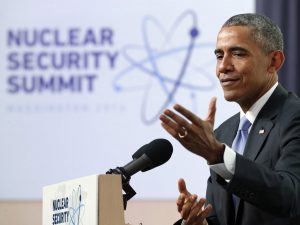
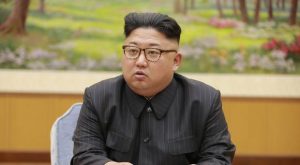
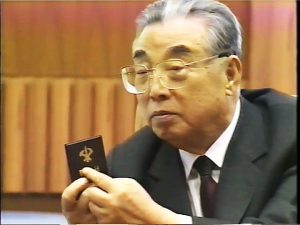
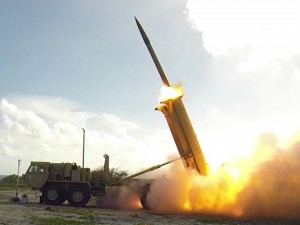
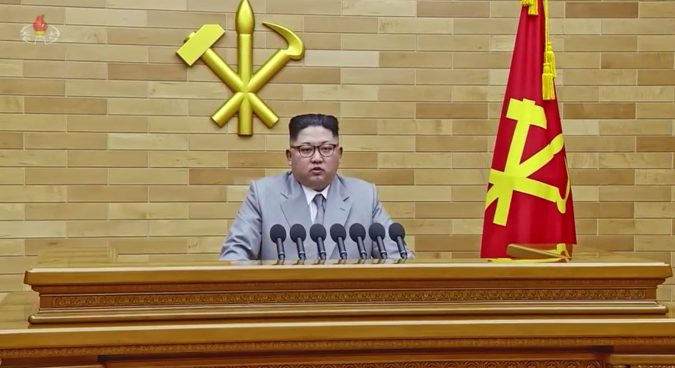
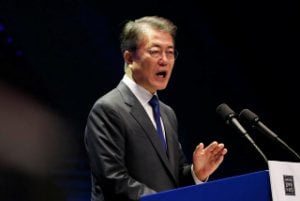
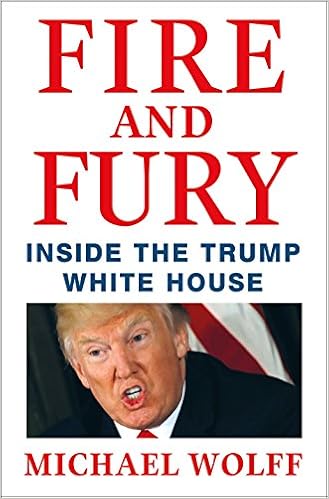
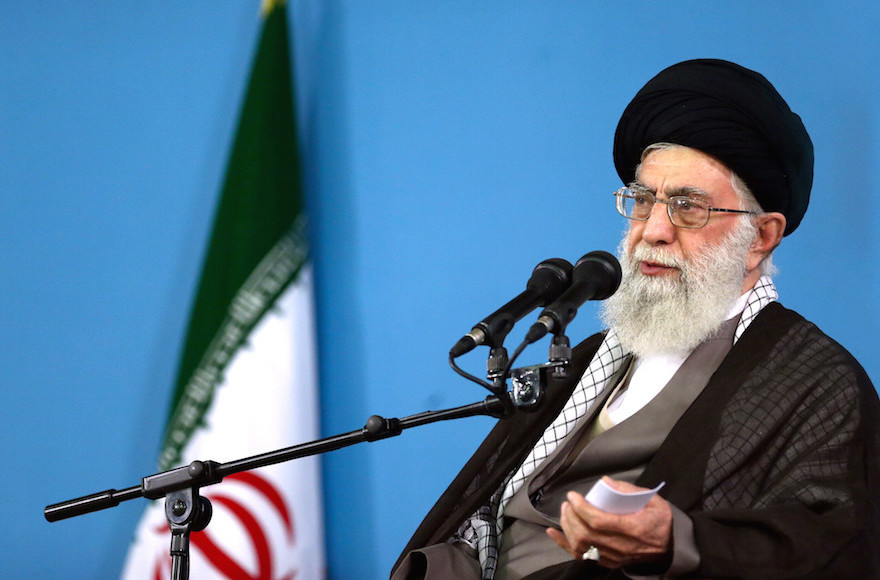 Ayatollah Ali Khamenei on 1 January, according to Reuters, blamed Iran’s foes for fomenting the unrest. Though he didn’t specify who they were, the secretary of Iran’s National Security Council,
Ayatollah Ali Khamenei on 1 January, according to Reuters, blamed Iran’s foes for fomenting the unrest. Though he didn’t specify who they were, the secretary of Iran’s National Security Council, 
